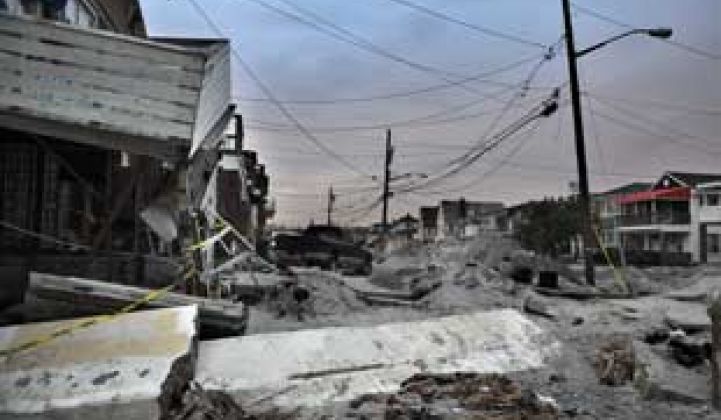Hurricane Sandy was not an anomaly, according to a new report. Neither were the Derecho storms in the mid-Atlantic or wildfires that ravaged the western U.S. last year.
There were eleven weather disasters in the U.S. in 2012 that cost at least $1 billion, ranking second only to the number of billion-dollar storms in 2011, according to a paper from the White House, Economic Benefits of Increasing Electric Grid Resilience to Weather Outages. By assessing the value of electricity service to homes and businesses, the study found the average cost for weather-related outages has been $18 billion to $33 billion annually in the last decade.

The increasing frequency and severity of extreme weather is not necessarily new information, and neither is the climbing price tag of such events. The study does not just outline the problem, but also suggests some of the investments that must be made in order to make the electrical system more resilient in the future.
The study outlined six priorities: managing risk, considering cost-effective strengthening, increasing system flexibility and robustness, increasing visualization and situational awareness, deploying advanced control capabilities, and monitoring critical components and software systems.
To meet these priorities for grid resilience, however, could cost more even than the storms. The study noted that Florida Power & Light will invest about $500 million to strengthen its system through 2015. PSE&G in New Jersey has a $4 billion grid resiliency plan.
The ARRA stimulus grants provided about $4.5 billion for smart grid projects, much of which went to smart meters, which can help pinpoint outages in a storm. But to meet some of the other priorities, such as regional storm plans, preparation exercises, and real-time visualization, the costs would be significant.

But the study argues that a more resilient grid will also have other benefits, such as the ability to withstand a cyberattack or just greater efficiency across the grid, which could ultimately lower energy use.
What the paper doesn’t do is specify whether there will be any new funds that could be available for utilities to meet the priorities it lays out. Like the president’s Policy Framework for the 21st Century Grid, it is simply a call to action.
“A multi-dimensional strategy will prepare the United States for climate change and the increasing incidence of severe weather,” the authors conclude. “Developing a smarter, more resilient electric grid is one step that can be taken now to ensure the welfare of the millions of current and future Americans who depend on the grid for reliable power.”



